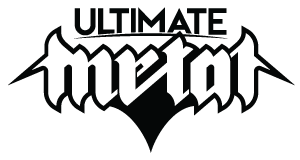- Sep 17, 2005
- 1,105
- 0
- 36
Seditious said:I think the biggest question one supposing free will is an illusion has to wonder is, what need a machine be made of to be conscious as we are, existing as a puppet watching itself do everything it is determined to do with no comprehension of how or why it is programmed to do it.
Before we will be able to do that, we still have much research to do in how exactly our consciousness works. We have come a long way and already know much about the functioning of our bodies, but there are still many areas to explore. And even if we almost completely understand the complex processes behind our consciousness, we will have to find a way to design an analog system using completely different materials as the ones we are made of. I think this is something for the far, far future.
Something quite interesting I found in the wikipedia page for free will:
Wikipedia said:Neuroscience and free will
It has become possible to study the living brain, and researchers can now watch the brain's decision-making "machinery" at work. A seminal experiment in this field was conducted by Benjamin Libet in the 1980s, in which he asked each subject to choose a random moment to flick her wrist while he measured the associated activity in her brain (in particular, the build-up of electrical signal called the readiness potential). Although it was well known that the readiness potential preceded the physical action, Libet asked whether the readiness potential corresponded to the felt intention to move. To determine when the subject felt the intention to move, he asked her to watch the second hand of a clock and report its position when she felt that she had the conscious will to move.
Libet found that the unconscious brain activity leading up to the conscious decision by the subject to flick his or her wrist began approximately half a second before the subject consciously felt that she had decided to move. Libet's findings suggest that decisions made by a subject are first being made on a subconscious level and only afterward being translated into a "conscious decision", and that the subject's belief that it occurred at the behest of her will was only due to her retrospective perspective on the event. The interpretation of these findings has been criticized by Daniel Dennett, who argues that people will have to shift their attention from their intention to the clock, and that this introduces temporal mismatches between the felt experience of will and the perceived position of the clock hand. Consistent with this argument, subsequent studies have shown that the exact numerical value varies depending on attention. Despite the differences in the exact numerical value, however, the main finding has held.
In a variation of this task, Haggard and Eimer asked subjects to decide not only when to move their hands, but also to decide which hand to move. In this case, the felt intention correlated much more closely with the "lateralized readiness potential" (LRP), an EEG component which measures the difference between left and right hemisphere brain activity. Haggard and Eimer argue that the feeling of conscious will therefore must follow the decision of which hand to move, since the LRP reflects the decision to lift a particular hand.
Related experiments showed that neurostimulation could affect which hands people move, even though the experience of free will was intact. Ammon and Gandevia found that it was possible to influence which hand people move by stimulating frontal regions that are involved in movement planning using transcranial magnetic stimulation in either the left or right hemisphere of the brain. Right-handed people would normally choose to move their right hand 60% of the time, but when the right hemisphere was stimulated they would instead choose their left hand 80% of the time (recall that the right hemisphere of the brain is responsible for the left side of the body, and the left hemisphere for the right). Despite the external influence on their decision-making, the subjects continued to report that they believed their choice of hand had been made freely. In a follow-up experiment, Alvaro Pascual-Leone and colleagues found similar results, but also noted that the transcranial magnetic stimulation must occur within 200 milliseconds, consistent with the time-course derived from the Libet experiments.
Despite these findings, Libet himself does not interpret his experiment as evidence of the inefficacy of conscious free will—he points out that although the tendency to press a button may be building up for 500 milliseconds, the conscious will retains a right to veto that action in the last few milliseconds. According to this model, unconscious impulses to perform a volitional act are open to suppression by the conscious efforts of the subject (sometimes referred to as "free won't"). A comparison is made with a golfer, who may swing a club several times before striking the ball. The action simply gets a rubber stamp of approval at the last millisecond. Max Velmans argues however that "free won't" may turn out to need as much neural preparation as "free will".


